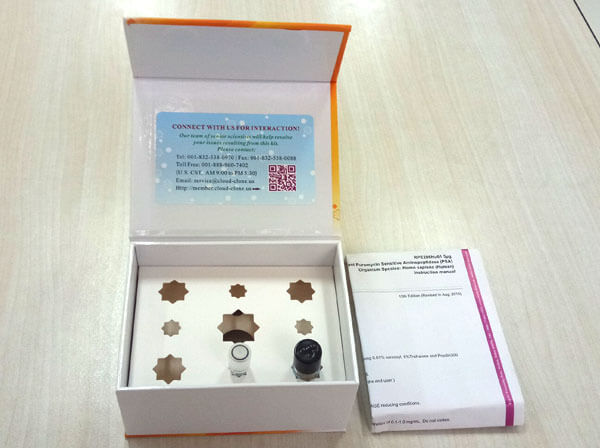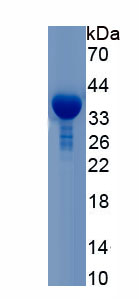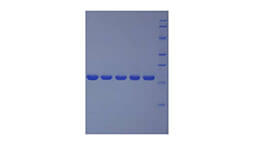Active Steroid 5 Alpha Reductase 2 (SRD5a2) 

3-Oxo-5 Alpha-Steroid Delta 4-Dehydrogenase Alpha 2
- UOM
- FOB US$ 279.00 US$ 698.00 US$ 1,396.00 US$ 4,188.00 US$ 10,470.00
- Quantity
Overview
Properties
- Product No.APM285Hu03
- Organism SpeciesHomo sapiens (Human) Same name, Different species.
- ApplicationsCell culture; Activity Assays.
Research use only - DownloadInstruction Manual
- CategoryEnzyme & Kinase
- Buffer FormulationPBS, pH7.4, containing 0.01% SKL, 5% Trehalose.
- Traits Freeze-dried powder, Purity > 90%
- Isoelectric Point8.7
Sign into your account
Share a new citation as an author
Upload your experimental result
Review
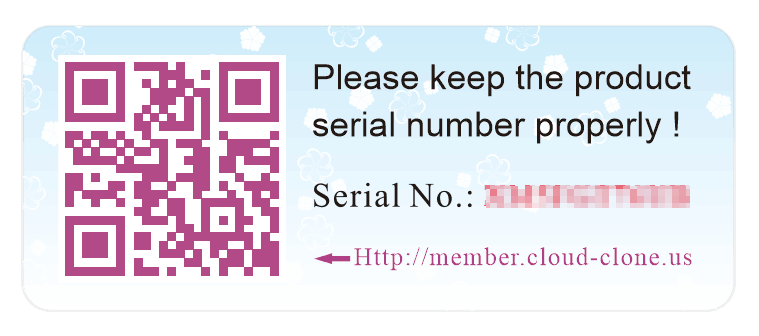
Contact us
Please fill in the blank.
Activity test

Steroid 5 Alpha Reductase 2 (SRD5a2) is a microsomal enzyme critical in steroid metabolism, primarily converting testosterone to dihydrotestosterone (DHT), a potent androgen. Expressed in androgen-sensitive tissues (e.g., prostate, skin), it regulates male sexual development, hair growth, and prostate function. Additionally, the SRD5a2-CYP17A1 complex optimizes androgen synthesis: CYP17A1 generates testosterone precursors, while SRD5a2 amplifies androgen potency via DHT production. This collaboration ensures efficient testosterone utilization and targeted DHT formation, critical for physiological androgen effects and pathological conditions.Thus a functional ELISA assay was conducted to detect the interaction of recombinant human SRD5a2 and recombinant human CYP17A1. Briefly, CYP17A1 was diluted serially in PBS with 0.01% BSA (pH 7.4). Duplicate samples of 100 μl were then transferred to SRD5a2-coated microtiter wells and incubated for 1h at 37℃. Wells were washed with PBST and incubated for 1h with anti-CYP17A1 pAb, then aspirated and washed 3 times. After incubation with HRP labelled secondary antibody for 1h at 37℃, wells were aspirated and washed 5 times. With the addition of substrate solution, wells were incubated 15-25 minutes at 37℃. Finally, add 50 µL stop solution to the wells and read at 450/630nm immediately. Measured by its binding ability in a functional ELISA. When recombinant SRD5a2 is lmmobilized at 2 ug/mL(100 uLwell), the concentration of CYP17A1 that produces 50% optimal bindingresponse is found to be approximately 0.307 ug/mL.
Usage
Reconstitute in 10mM PBS (pH7.4) to a concentration of 0.1-1.0 mg/mL. Do not vortex.
Storage
Avoid repeated freeze/thaw cycles. Store at 2-8°C for one month. Aliquot and store at -80°C for 12 months.
Stability
The thermal stability is described by the loss rate. The loss rate was determined by accelerated thermal degradation test, that is, incubate the protein at 37°C for 48h, and no obvious degradation and precipitation were observed. The loss rate is less than 5% within the expiration date under appropriate storage condition.
Increment services
-
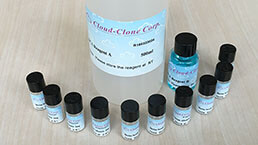 BCA Protein Quantification Kit
BCA Protein Quantification Kit
-
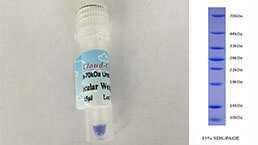 Molecular Mass Marker for Protein
Molecular Mass Marker for Protein
-
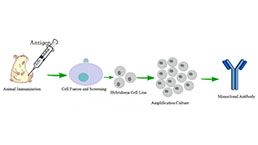 Monoclonal Antibody Customized Service
Monoclonal Antibody Customized Service
-
 Polyclonal Antibody Customized Service
Polyclonal Antibody Customized Service
-
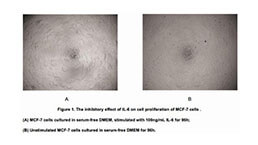 Protein Activity Test Experiment Service
Protein Activity Test Experiment Service
-
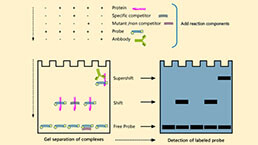 Electrophoretic Mobility Shift Assay (EMSA) Experiment Service
Electrophoretic Mobility Shift Assay (EMSA) Experiment Service
-
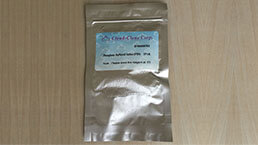 Buffer
Buffer
-
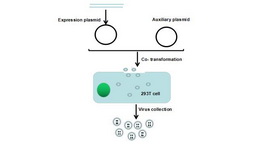 Lentivirus Packaging Experiment Service
Lentivirus Packaging Experiment Service
-
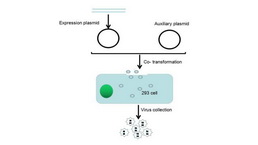 Adenovirus Packaging Experiment Service
Adenovirus Packaging Experiment Service
-
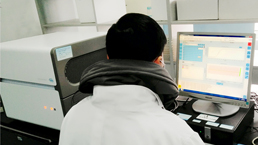 Real Time PCR Experimental Service
Real Time PCR Experimental Service
-
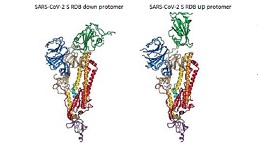 Spike RBD Protein (S-RBD)
Spike RBD Protein (S-RBD)
-
 Protein G
Protein G
-
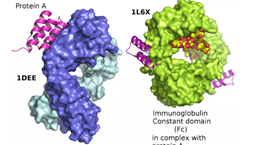 Protein A
Protein A
Citations
- Seoritae extract reduces prostate weight and suppresses prostate cell proliferation in a rat model of benign prostate hyperplasiaPubmed:24701239
- TSPO activation modulates the effects of high pressure in a rat ex vivo glaucoma model.pubmed:27596950
- Effects of ethanolic extracts of Cola millenii K. Schum seed on biochemical and toxicological indices of male wistar albino rats1616357
- Corni Fructus attenuates testosterone-induced benign prostatic hyperplasia by suppressing 5α-reductase and androgen receptor expression in rats10.4162:nrp.2018.12.e36
- Yohimbine hydrochloride inhibits benign prostatic hyperplasia by downregulating steroid 5α-reductase type 234265299




